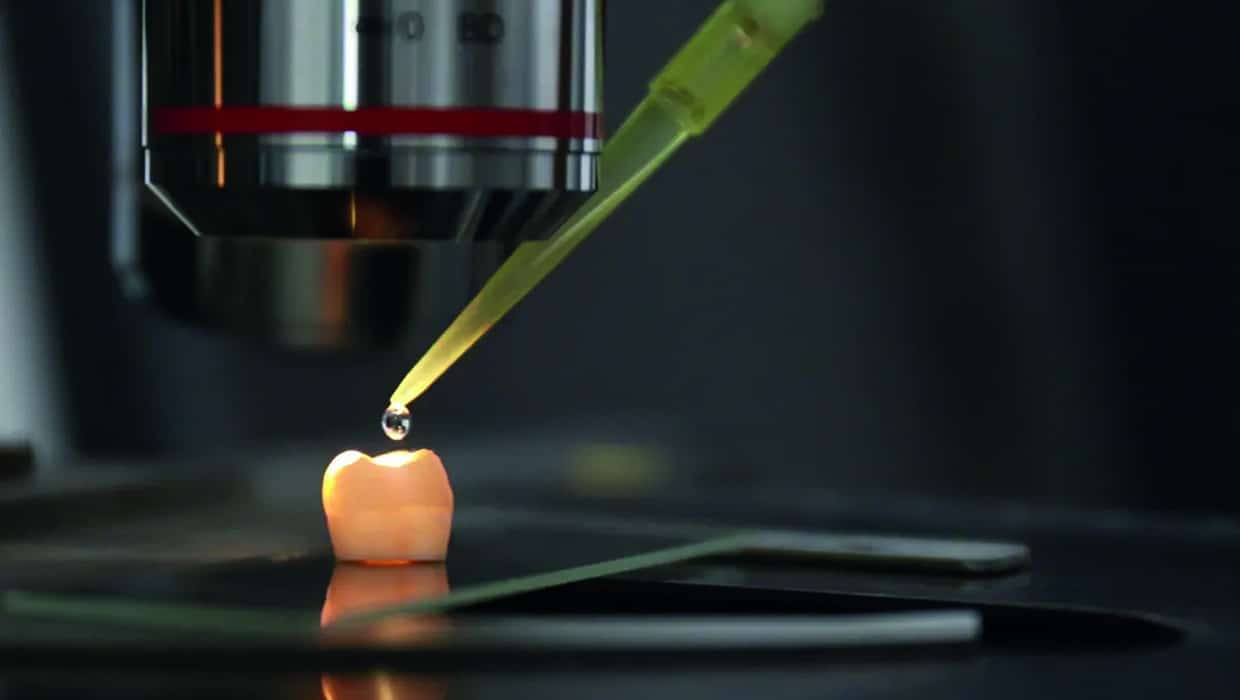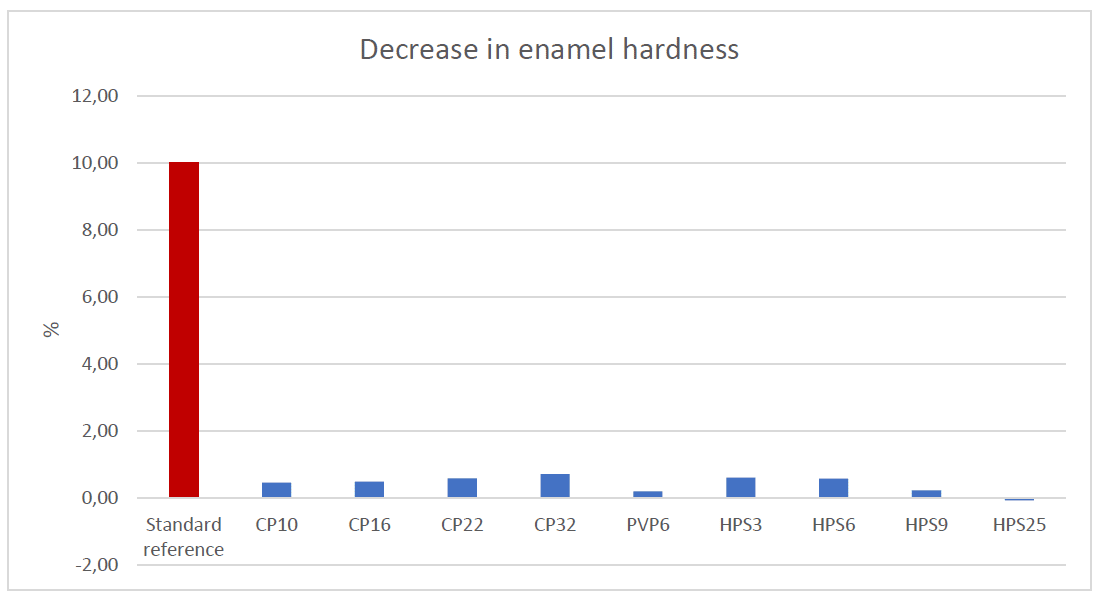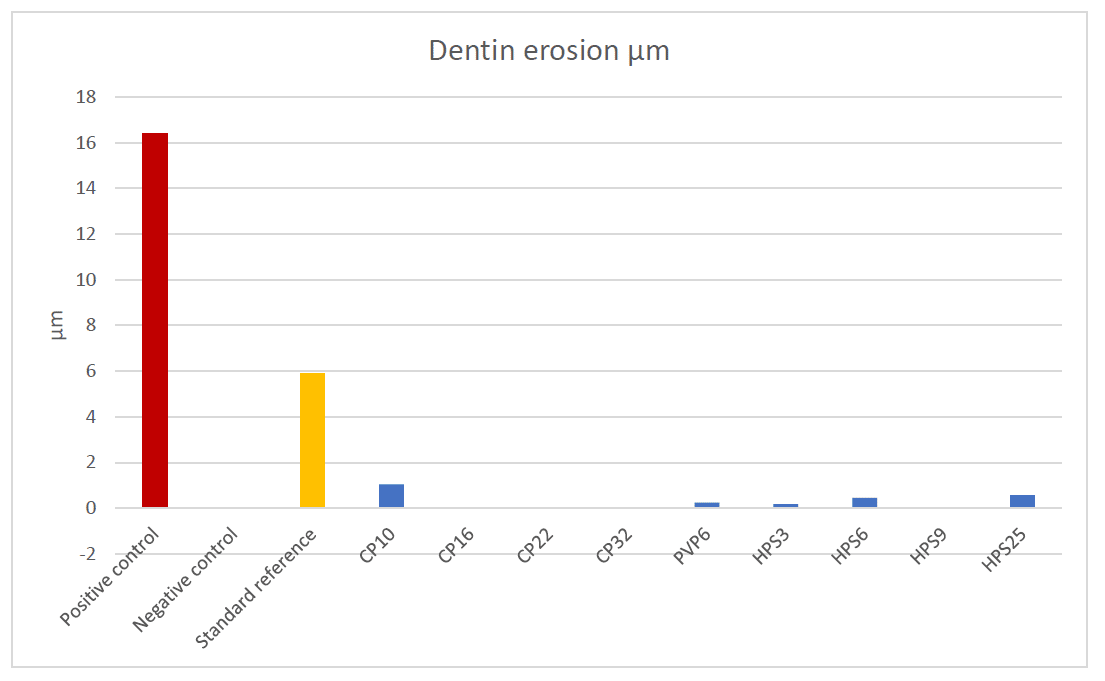
When studying the available literature, it is evident that publications on whitening are controversial. Depending on the evaluated products, used test protocols, and of course the responsible university resulted in different conclusions. Therefore, this subject was brought up to the ISO committee ISO/TC106/SC7 responsible for the product standard ISO 28399 “External tooth bleaching products”.
The standard for whitening products already contained requirements on the stability of hydrogen peroxide and the efficacy of the whitening treatment. In the recent publication (2021) the standard is extended with two more tests on safety:
- Surface Microhardness
- Surface Erosion
These tests give more adequate information on the possible influences of a whitening treatment on the enamel and dentin.
Unfortunately, these tests are rather complex as they are performed on prepared human teeth. Therefore, we decided to cooperate for the performance of these tests with the internationally well-known laboratory Intertek in the UK. During several weeks of preparing test samples, and defining protocols for test performances, all Cavex whitening gels were evaluated.
Surface Microhardness test
For the surface microhardness test, enamel blocks were sectioned and highly polished. A Buehler MicroMet 5103 surface microhardness machine was used to measure the Vickers microhardness. Ten enamel samples were assigned to each treatment, with no samples required for the control or standard. After daily treatment for 15 minutes, for 14 consecutive days, the Vickers microhardness was measured again.
Requirement according to the standard
The products must not reduce the mean surface microhardness of the enamel samples by more than 10% of the initial microhardness of the samples.
Surface Microhardness results
The mean percentage change in Vickers surface microhardness showed between -0,70 and +0,08%. All Cavex whitening gels have very little impact on the surface microhardness and passed the safety requirements of the standard.

Surface Erosion test
For the surface erosion test, samples of human enamel and dentine were sectioned, set into resin moulds, and polished. A 3D surface profilometer was used to measure the baseline surface profiles. Tape was then used to provide a baseline reference area and a 1mm unprotected strip that would be exposed to the treatments. Six samples were assigned to each treatment which were treated daily for 15 minutes, for 14 consecutive days. In between, and after treatment, the samples were stored in artificial saliva (37oC) and a 3D surface profilometer was used to measure the erosion.
Requirement according to the standard
The whitening gels must not have eroded the enamel or dentine samples by more than the level of erosion caused by exposing samples to the reference standard solution.
Surface Erosion results
The level of erosion caused by the Cavex whitening gels was well below the level of erosion caused by the standard reference solution (enamel 0,00 µm, dentin -0,03 – 1,04 µm). All whitening gels passed the safety requirements of the standard.

General Conclusion
In conclusion, we can state that all Cavex Bite&White whitening products are in compliance with the relevant ISO 28399:2021 “External tooth bleaching products” and therefore a safe choice for dental teeth whitening treatments.
More information
For more information on our premium whitening solutions, you can find our complete assortment here.
If you have any questions feel free to contact us.